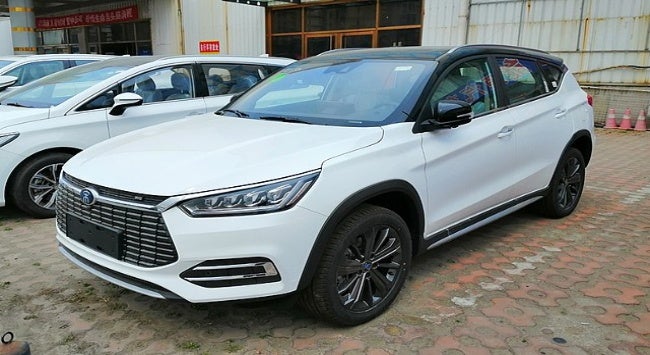Summary
New United States and European Union tariffs on Chinese electric vehicles (EVs) will lead to the relocation of some EV manufacturers from China. India might be a beneficiary of the relocation.
Electric vehicles (EVs) are no longer the only mediums for facilitating the transitions to clean energy. They are the latest contributors to global trade tensions and are responsible for more fragmentation in global trade and investment flows.
The United States (US) and the European Union (EU) have lately imposed strong trade restrictions on the import of Chinese EVs. As part of its investigations under Section 301 of the US Trade Act of 1974, the Joe Biden administration has increased tariffs on several imports from China, where it found evidence of Beijing resorting to unfair trade practices. These include EVs, on which tariffs have increased from 25 per cent to 100 per cent. The tariffs were motivated by Chinese EV exports to the US rising at a brisk pace, notwithstanding sustained efforts of the Biden administration to incentivise local EV manufacturing through generous subsidies.
The EU has also decided to impose countervailing duties on the imports of EVs by prominent Chinese manufacturers such as BYD, Gilly and SAIC. The duties range from 17.4 per cent and 20 per cent for BYD and Gilly respectively, to as much as 38.1 per cent for SAIC. Duties on the imports of EVs made by other Chinese producers will vary from 21 per cent to 38.1 per cent.
Both the US and the EU want to restrict the sales of Chinese EVs in their domestic markets by offsetting the price advantage Chinese EVs enjoy. The advantage, as the tariff decisions outline, is obtained from unfair trade practices, primarily domestic subsidies. The latter have been instrumental in generating an overcapacity in EV production in China, enabling it to export EVs to the global markets at cheap prices.
Whether China contests the tariffs by challenging them at the World Trade Organisation or retaliates by imposing its own restrictions on US and EU exports, if not both, will be revealed over time. However, the latest tariffs will set off a fresh round of fragmentation in global exports and investments.
Global trade and capital flows began being redirected after the onset of the US-China trade war in 2018. Broad-based US tariffs on Chinese imports urged the latter to be made in locations from where their entry into the US would not attract tariffs. Further shifts, driven by geopolitical factors and the tendency to decouple and derisk from mainland China, led to friend-shoring of investments and concentration of trade among geopolitically aligned groups of countries. The new tariffs on EVs will increase these tendencies.
Chinese producers of EVs will look to gain access to new markets due to domestic overcapacity and import restrictions imposed by the US and the EU. The obvious choices will be countries from where exports to the US and the EU will be less restrictive. India might be an interesting prospect in this regard.
Earlier in March this year, India sharply reduced import duties on EVs to 15 per cent from 70-100 per cent. Imports at this lower rate are allowed to foreign producers if they satisfy certain conditions. These include investing up to a minimum amount of US$500 million (S$677.4 million) in setting up local manufacturing facilities in India, establishing local facilities within three years and achieving a minimum local value addition of 25 per cent within this period.
The policy was announced well before the US and the EU decided to impose new tariffs on Chinese EVs. Clearly, the ostensible objective of the strategy to allow the import of EVs at lower tariffs subject to manufacturers committing to long-term local investment was to attract big global EV makers like Tesla.
Ironically, the trade restrictions imposed by the US and the EU might actually succeed in pushing Tesla and BMW to India, similar to how they did for Apple, as non-Chinese EV manufacturers in China look at other options.
Chinese EV producers might also be eyeing India. BYD is already in India and importing EVs. MG Motors, a subsidiary of SAIC, is partnering with the JSW group to make EVs locally. However, even then, it will be difficult for Chinese investments to expand in India, given the onerous scrutiny they will be subjected to.
More Chinese EVs will help increase the EV uptake rate in India, which is now pretty low. However, given India’s active role in pursuing a China plus one strategy of derisking and friendshoring and its collaboration with the US, the EU and the G7 in implementing the strategy, it will try to avoid the possibility of becoming a conduit for rerouting Chinese EVs to these markets.
Even without Chinese investments, India can look forward to attracting US and EU EV manufacturers as they work on shifting their production bases from China. More foreign EV presence in India will encourage the ramping up of capacities of local manufacturers. The trade war on EVs can have an unexpected winner in India.
. . . . .
Dr Amitendu Palit is a Senior Research Fellow and Research Lead (Trade and Economics) at the Institute of South Asian Studies (ISAS), an autonomous research institute at the National University of Singapore (NUS). He can be contacted at isasap@nus.edu.sg. The author bears full responsibility for the facts cited and opinions expressed in this paper.
Pic Credit: https://commons.wikimedia.org/w/index.php?search=Chinese+EV&title=Special:MediaSearch&go=Go&type=image
-
 More From :
More From :
-
 Tags :
Tags :
-
 Download PDF
Download PDF



